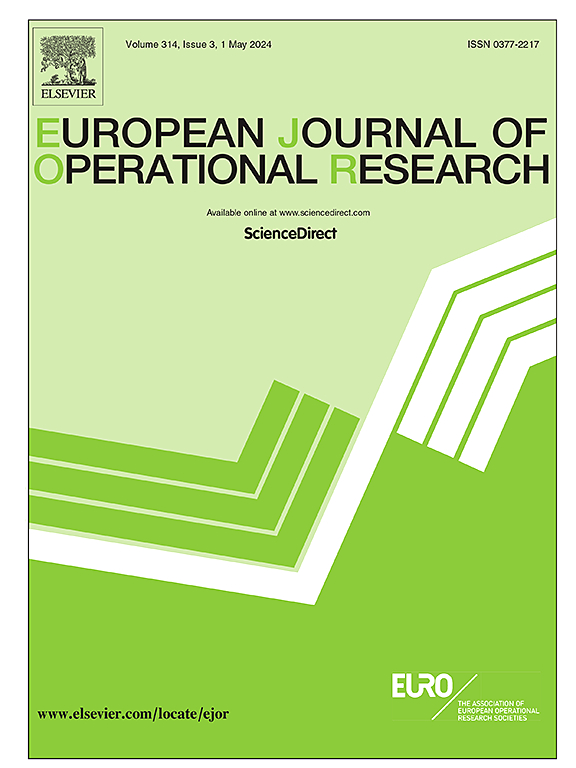Consumer preference estimation based on intertemporal choice data: A chance constrained data envelopment analysis method
IF 6
2区 管理学
Q1 OPERATIONS RESEARCH & MANAGEMENT SCIENCE
引用次数: 0
Abstract
Choice behavior reflects consumer preferences. Consumers often purchase products online nowadays, which can be viewed as a choice process. If a consumer makes multiple transactions over a period of time, then we can say the consumer make multiple intertemporal choices. This study focuses on the problem of learning consumer preferences from intertemporal choice data. The main challenges in this research include the ratio relationship between some attributes, the variability of choice set and the uncertainty of attribute values. To address these challenges, we propose a consumer preference model based on the chance-constrained data envelopment analysis (DEA) framework. In the model, we assume consumer choice has maximum utility value, and define a performance cost utility function to capture the ratio relationship between some attributes. We then develop two scenarios for the consumer preference model, depending on whether the uncertain variables are correlated. The estimated consumer preferences can be used to predict each consumer's choice and item ranking. To validate our model, we conduct two numerical experiments, and analyze the impact of some parameters on the preference and evaluation results. The results show that the estimated preference values are accurate when the values of risk indicator and correlation coefficients are small, and our model performs well on the predictions of choice and item ranking.
基于跨期选择数据的消费者偏好估计:一种机会约束数据包络分析方法
选择行为反映了消费者的偏好。现在消费者经常在网上购买产品,这可以被视为一个选择的过程。如果消费者在一段时间内进行多个事务处理,那么我们可以说消费者进行了多个跨期选择。本研究主要探讨从跨期选择数据中学习消费者偏好的问题。本研究面临的主要挑战包括一些属性之间的比例关系、选择集的可变性和属性值的不确定性。为了解决这些挑战,我们提出了一个基于机会约束数据包络分析(DEA)框架的消费者偏好模型。在模型中,我们假设消费者的选择具有最大的效用值,并定义一个性能成本效用函数来捕捉某些属性之间的比值关系。然后,根据不确定变量是否相关,我们为消费者偏好模型开发了两种场景。估计的消费者偏好可以用来预测每个消费者的选择和项目排名。为了验证我们的模型,我们进行了两个数值实验,并分析了一些参数对偏好和评价结果的影响。结果表明,当风险指标值和相关系数值较小时,预测的偏好值是准确的,该模型对选择和项目排名的预测效果良好。
本文章由计算机程序翻译,如有差异,请以英文原文为准。
求助全文
约1分钟内获得全文
求助全文
来源期刊

European Journal of Operational Research
管理科学-运筹学与管理科学
CiteScore
11.90
自引率
9.40%
发文量
786
审稿时长
8.2 months
期刊介绍:
The European Journal of Operational Research (EJOR) publishes high quality, original papers that contribute to the methodology of operational research (OR) and to the practice of decision making.
 求助内容:
求助内容: 应助结果提醒方式:
应助结果提醒方式:


